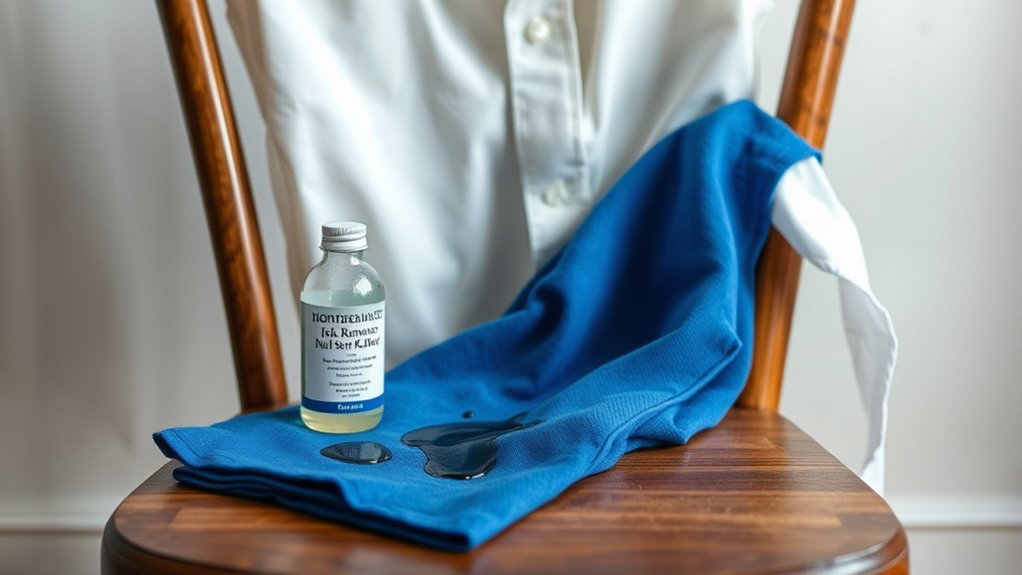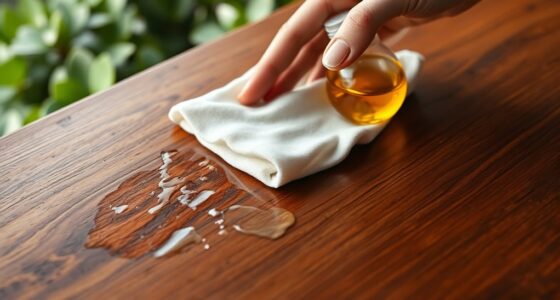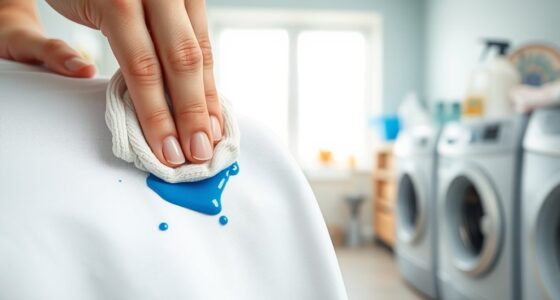Ink stains can be tough, but you’ve got tricks to make them disappear! Act quickly by blotting the stain with a clean cloth to prevent spreading. Use rubbing alcohol or dish soap mixed with water for most ink types. For stubborn stains, specialized removers or vinegar can work wonders. And remember, testing cleaning solutions on a hidden fabric area is key. Keep going to discover even more effective tips and techniques to tackle those pesky ink stains!
Key Takeaways
- Act quickly by blotting fresh ink stains with a clean cloth to prevent spreading and setting the stain.
- Use rubbing alcohol or hairspray to effectively lift ballpoint pen ink from fabric.
- For water-based ink stains, a simple mixture of dish soap and warm water can work wonders.
- Test any cleaning solution on a hidden area of the fabric to ensure it won’t cause discoloration.
- If stains persist, consider professional cleaning for delicate fabrics or stubborn, deeply set ink marks.
Understanding Ink Stains: Types and Challenges
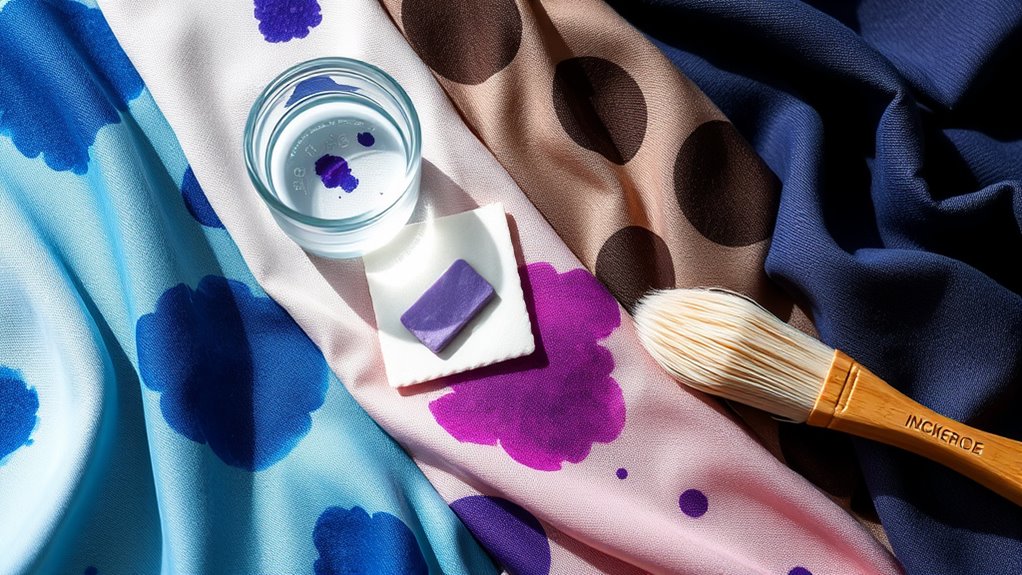
What makes ink stains so tricky to deal with? The diverse types of ink present unique challenges.
For example, ballpoint pen ink is thick and oily, making it tough to remove, while water-based inks found in fountain pens are usually easier to tackle. Permanent ink, however, can be a nightmare, often needing specialized removers. Additionally, ink penetrates fabrics quickly, complicating removal efforts. Each fabric type responds differently; cotton and linen can withstand vigorous cleaning, while delicate silk requires gentle care. Prompt action is crucial for successful ink stain removal, as delayed treatment can lead to permanent damage.
Ballpoint pen ink’s oily consistency poses removal challenges, while water-based inks are generally easier; however, permanent ink often requires special treatments.
Set-in stains become increasingly stubborn over time, and some inks may affect a fabric’s colorfastness. Understanding these factors is essential for effective stain removal and protecting your favorite clothes and upholstery.
Quick Response: The Importance of Acting Fast
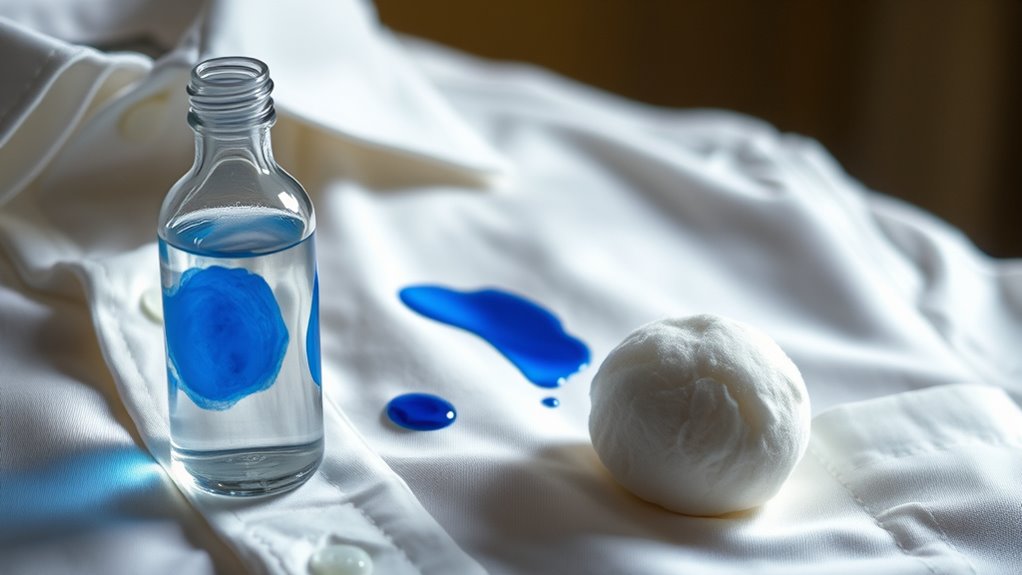
When ink spills onto fabric or surfaces, acting quickly can make all the difference in preventing lasting damage. Ink dries fast and can set into fibers, making removal considerably harder. By tackling the stain immediately, you’ll save yourself from resorting to harsh chemicals and complicated cleaning methods. Fresh stains are much easier to deal with, and you’ll likely avoid costly professional services. Plus, quick action reduces the risk of spreading the stain, which can complicate your cleaning efforts. Remember to blot excess ink gently and use clean cloths or paper towels. Quick action is essential to prevent permanent damage and discoloration.
Essential Tools for Ink Stain Removal
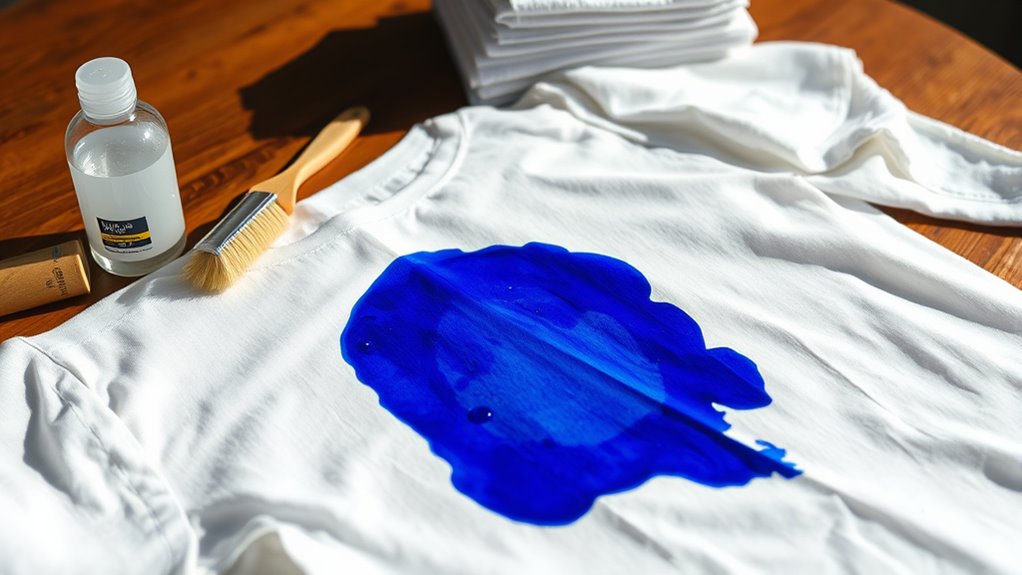
To effectively tackle ink stains, having the right tools on hand can make all the difference. Start with rubbing alcohol, a simple yet powerful solution for lifting ink stains. If the stains are tough, consider specialized removers like Shout Advanced or OxiClean. Acetone-based nail polish remover is another option, particularly for stubborn marks. For color-based ink and markers, enzymatic stain solutions work wonders. Hand sanitizer can help too, thanks to its alcohol content, though it’s less effective. Always remember to test any cleaning solution on a hidden area of the fabric to avoid discoloration. Additionally, identifying the ink type can help you choose the most effective cleaning solution for your specific stain.
Having the right tools, like rubbing alcohol, is crucial for effectively tackling ink stains.
With these essential tools, you’re well-equipped to combat ink stains effectively and restore your clothes to their former glory.
Techniques for Different Types of Ink
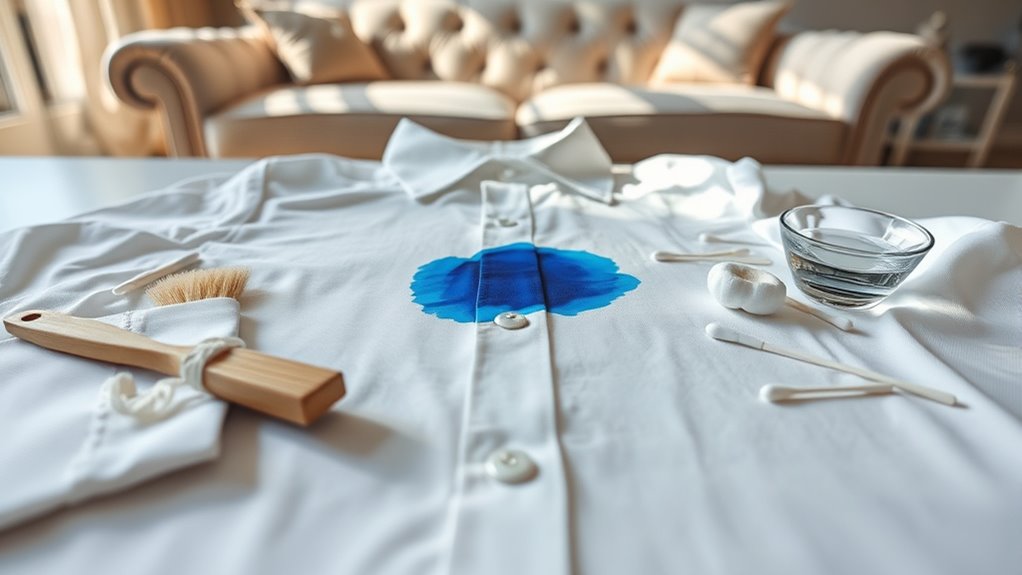
Ink stains come in various forms, each requiring a tailored approach for effective removal.
For ballpoint pen ink, use rubbing alcohol or hairspray to break down its thick, oily texture. Immediate action is essential to increase the chances of successful removal.
Water-based ink, common in fountain pens, usually responds well to simple water treatments.
Permanent ink is trickier; you’ll need specialized removers designed for this stubborn stain.
Printer ink, being thicker, demands specific methods for removal.
If you’re dealing with felt-tip ink, ammonia can be effective.
When treating different fabrics, use rubbing alcohol for cotton and denim, while silk needs a milder soap solution.
Always test on a hidden area first, especially with delicate materials, to avoid damage.
Quick action is crucial to prevent stains from setting.
Common Household Remedies to Try
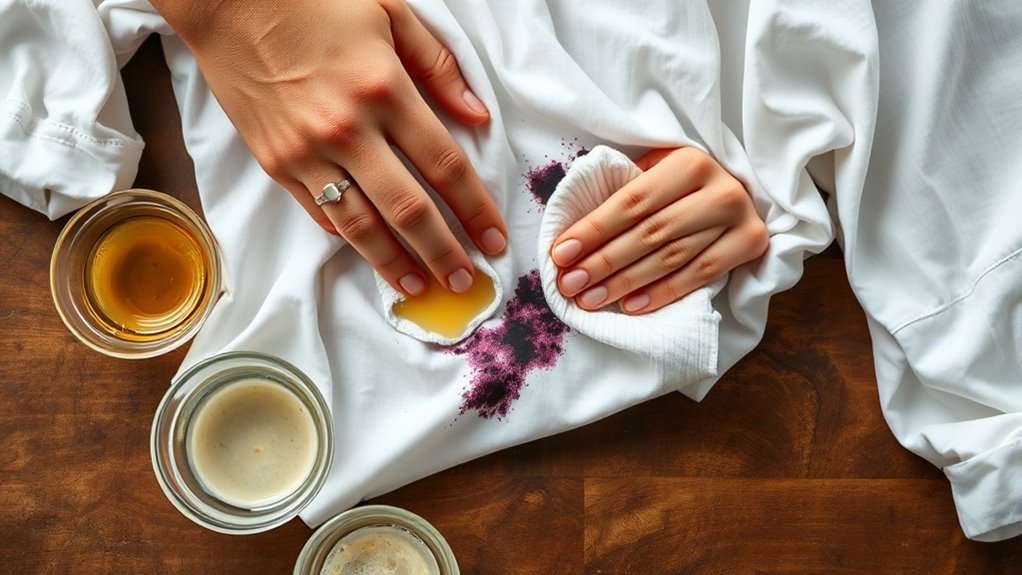
While dealing with ink stains can feel overwhelming, several common household remedies can make the process much easier.
Start by mixing dish soap with warm water to tackle water-based stains. For oil-based inks, rub a bit of rubbing alcohol onto the stain; it breaks down the pigment effectively. Prompt action is essential, as wet ink is easier to remove than dry ink.
Mix dish soap with warm water for water-based stains, or use rubbing alcohol for oil-based inks to effectively break down pigments.
You can also create a vinegar solution with equal parts white vinegar and water to gently lift the ink without damaging the fabric. If you have hairspray handy, spritz it on the stain to loosen it before washing.
Finally, a paste of baking soda and water can help lift stubborn stains. Remember to act quickly for the best results!
Dedicated Products for Stubborn Ink Stains
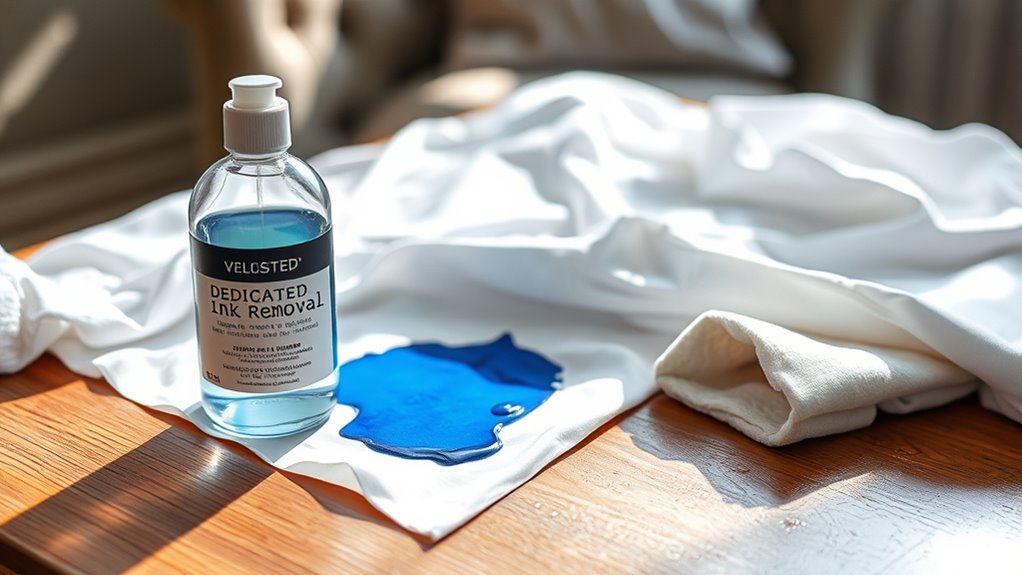
When household remedies aren’t enough to tackle stubborn ink stains, dedicated products can come to the rescue.
For clothing, Laundress Stain Solution works wonders on water-soluble inks, while Signature Detergent enhances cleaning and brightens fabrics. To boost your stain-fighting efforts, use a stain-fighting detergent like Whites Detergent for light-colored items. Additionally, consider using energy-efficient appliances that can help maintain your fabrics’ quality over time. Engaging your imagination can also help you think creatively about tackling tough stains. Regularly checking and cleaning air purifier filters can also improve air quality in your home, minimizing odors that may settle into fabrics. It’s also crucial to consider preventive maintenance for your appliances, as this can extend their lifespan and ensure optimal performance.
If you’re dealing with leather upholstery, Leather Honey is gentle yet effective.
For tougher fabrics like denim or polyester, consider specialized commercial ink removers designed for those materials.
If you need a solvent, isopropyl alcohol is great for non-water-soluble inks, but use caution with acetone.
Remember to test any product on a hidden area first.
With these dedicated solutions, you’ll have a better chance of winning the battle against persistent ink stains!
Preventing Future Ink Stains
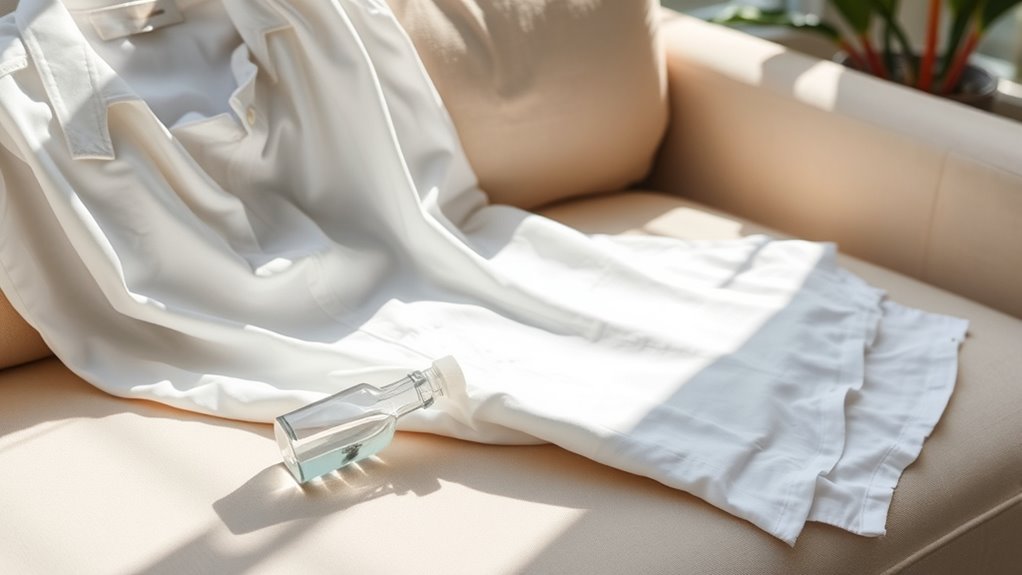
To prevent future ink stains, it’s essential to understand the different types of ink and take proactive measures.
Start by identifying whether you’re using water-based, oil-based, or permanent ink, as this knowledge guides your prevention strategies. Handle pens and markers carefully, and always use caps when they’re not in use to avoid leaks. Additionally, consider using products like rubbing alcohol to address any fresh stains promptly before they set. Regular cleaning of surfaces can also help to remove any accidental ink spills before they become problematic, ensuring optimal performance in your workspace. Implementing a cleaning schedule can help maintain a tidy environment and reduce the risk of ink-related accidents.
Identify your ink type—water-based, oil-based, or permanent—and handle your writing tools with care to prevent leaks.
Designate ink-free zones in your home or workspace to reduce the risk of spills. Opt for stain-resistant clothing and consider wearing protective garments, like aprons, when working with inks.
Ultimately, choose pens with secure caps or quick-drying inks to minimize leakage, and keep ink-absorbent materials nearby to catch spills before they spread.
These small steps can save you from frustrating stains.
Removing Ink Stains From Upholstery
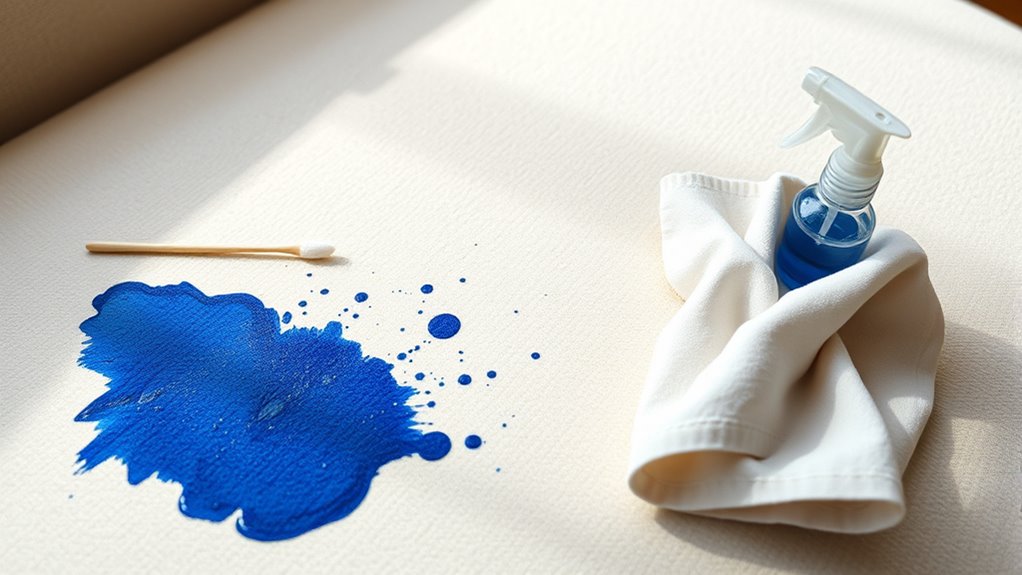
Ink stains on upholstery can be frustrating, but with the right approach, you can effectively remove them.
Start by blotting the excess ink with a paper towel or cloth. Choose a cleaning solution, like rubbing alcohol or a mixture of dish soap and water, and apply it to the stain using a clean cloth—avoid rubbing. Regular cleaning can help minimize pest infestations by eliminating food sources and hiding spots, making it easier to maintain your upholstery. Maintaining mental clarity can also enhance your problem-solving skills, making it easier to tackle such household issues. Many hotels, especially in places like Orlando, offer water park amenities that can help keep families entertained while tackling chores at home. Regular cleaning not only preserves your upholstery but also improves indoor air quality, which can be affected by trapped dust and allergens.
Blot the area gently, repeating the process until the stain lifts. If the ink is stubborn, consider using denatured alcohol or non-acetone nail polish remover, but test it on a hidden area first. Quick action is essential for the best chance of stain removal.
After the stain is gone, dampen another cloth with water to rinse any residue, then blot dry. Finally, let the fabric air dry completely to prevent moisture buildup.
Testing Cleaning Solutions Safely
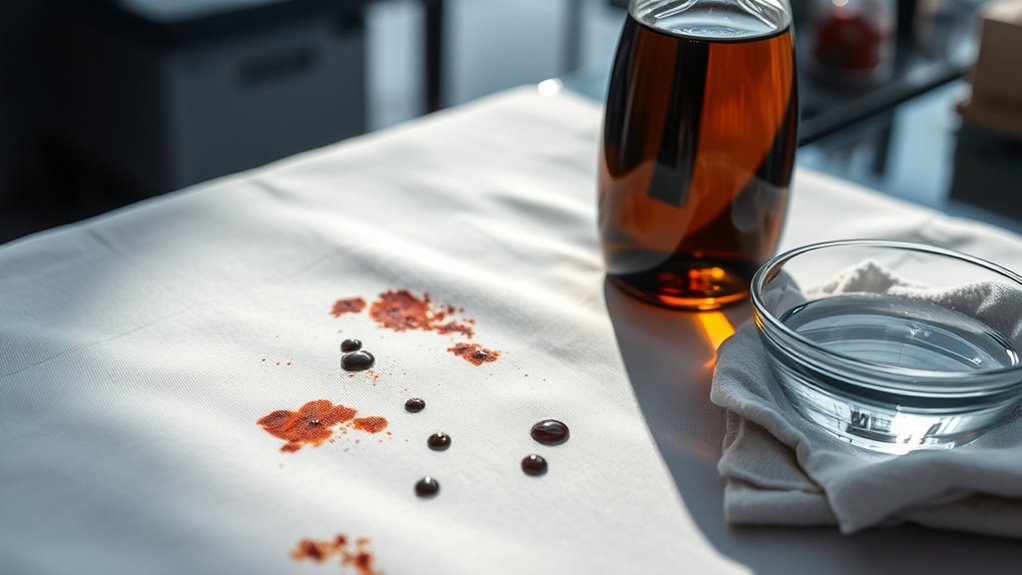
Successfully removing ink stains from upholstery is just the beginning; ensuring the cleaning solutions you use won’t harm your fabric is equally important.
Start by testing any solution on an inconspicuous area to check for colorfastness. This prevents unpleasant surprises like bleeding or discoloration. If you’re using commercial products like Stain Devils #3, rest assured they’re dermatologically tested for skin safety for safety on hands. Additionally, consider that different materials may require unique approaches, much like how Tesla employs advanced safety features to prevent risks associated with their vehicles. For instance, using age-appropriate designs can help ensure the longevity of the upholstery while maintaining its appearance. Using a gentle cleaning method is crucial, especially if you’re dealing with best vacuums for hardwood floors since they provide effective dust removal without damaging the fabric. Moreover, choosing vacuums with advanced filtration systems can help maintain a healthy indoor environment while cleaning.
Always test cleaning solutions on an inconspicuous area first to avoid any unexpected color changes or damage.
Remember that different fabrics have unique sensitivities—avoid harsh solutions on silk or leather. Opt for environmentally friendly products for safe disposal. Finally, use gentle treatments for delicate fabrics, as over-saturation can weaken them.
When to Seek Professional Help
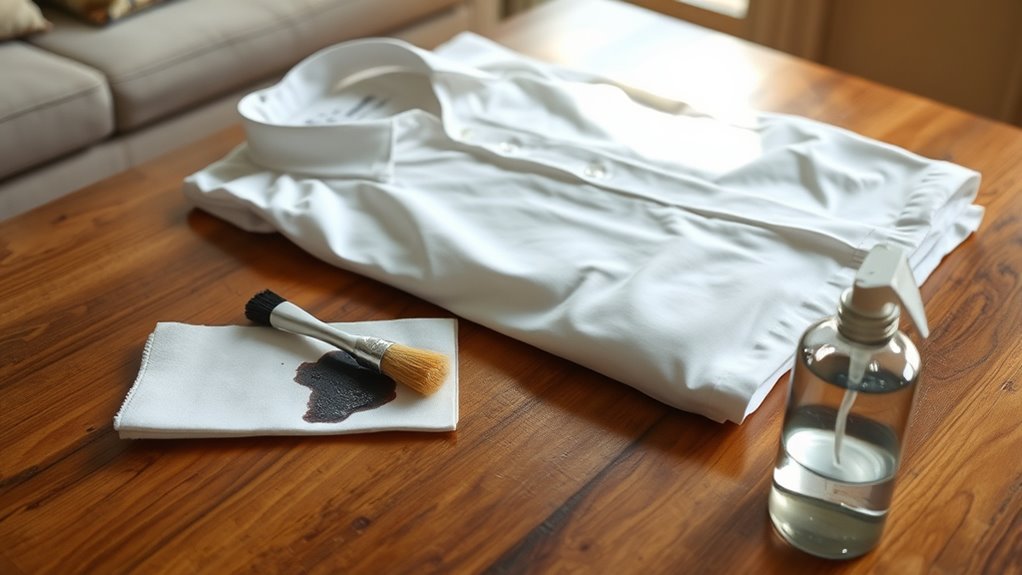
When faced with stubborn ink stains that resist your best efforts, it’s often time to contemplate professional help.
If the stain has deeply penetrated the fabric or covers a large area, you might need expert assistance. Permanent ink is notoriously tough to remove, especially if the stain is older or on delicate materials like silk or wool. For complex items, such as leather or vintage fabrics, specialized techniques are essential to avoid damage. If you’re unsure about cleaning methods or lack access to the right solutions, consulting a professional can save time and reduce the risk of further issues. Ultimately, their advanced equipment and tailored solutions can guarantee better results than DIY methods. Additionally, quick action is crucial in improving the chances of effective stain removal, making professional assistance even more valuable for persistent stains.
Frequently Asked Questions
Can Vinegar Effectively Remove Ink Stains From Clothing?
Yes, vinegar can effectively remove ink stains from clothing.
You should mix it with dish soap and a little water for best results. Before applying the solution, test it on a hidden area of the fabric to guarantee it won’t cause damage.
Act quickly, as fresh stains are easier to treat. For delicate fabrics, use caution.
If the stain persists, consider trying a stronger method or a commercial ink remover.
What Should I Do if Ink Stains Spread While Blotting?
Imagine you’re frantically trying to save your favorite shirt after a pen leaks in your bag.
If ink spreads while you’re blotting, don’t panic. Immediately place a paper towel underneath to absorb excess ink.
Gently blot the area with a clean cloth, avoiding rubbing. Apply a solvent like rubbing alcohol carefully, but don’t soak it.
Rinse with cold water afterward, letting it air dry to prevent further setting of the stain.
Are There Any Fabric Types That Are More Resistant to Ink Stains?
Yes, some fabric types are more resistant to ink stains.
Synthetic fibers, like polypropylene and olefin, are particularly good at repelling stains due to their chemical makeup.
Microfiber’s tight weave also helps resist stains, while specialized fabrics like Crypton and performance textiles are designed to handle spills effectively.
Natural fibers, like wool and linen, offer some resistance but aren’t as reliable, so it’s best to choose synthetic options for stain-prone environments.
How Can I Prevent Ink Stains When Using a Fountain Pen?
Preventing ink stains is like guarding against a summer rain—it’s all about preparation.
You can keep ink flowing smoothly by using your fountain pen regularly and storing it capped. Handle it gently to avoid accidental spills and always write on a stable surface.
Choose high-quality, water-based inks to minimize staining risks, and clean your pen often to prevent clogs.
With these steps, you’ll enjoy a cleaner writing experience without the worry of stains.
Is It Safe to Use Bleach on All Ink Stains?
It’s not safe to use bleach on all ink stains.
While color-safe bleach can work on some ballpoint pen stains, it may damage fabrics and isn’t effective on permanent inks. Always test a hidden area first to avoid discoloration.
For tough stains, consider alternatives like rubbing alcohol or vinegar, as they’re often more versatile and less damaging.
Act quickly, and remember to blot the stain instead of rubbing it!
Conclusion
In the battle against ink stains, think of yourself as a skilled artist, ready to erase mistakes with the right tools and techniques. Just like a painter knows their brushes, you can tackle stains with confidence. Remember, acting fast is your best ally; it’s like catching a falling brush before it smudges your canvas. With a little creativity and quick thinking, you can transform any mishap into a clean slate, keeping your clothes and upholstery looking vibrant and fresh.
